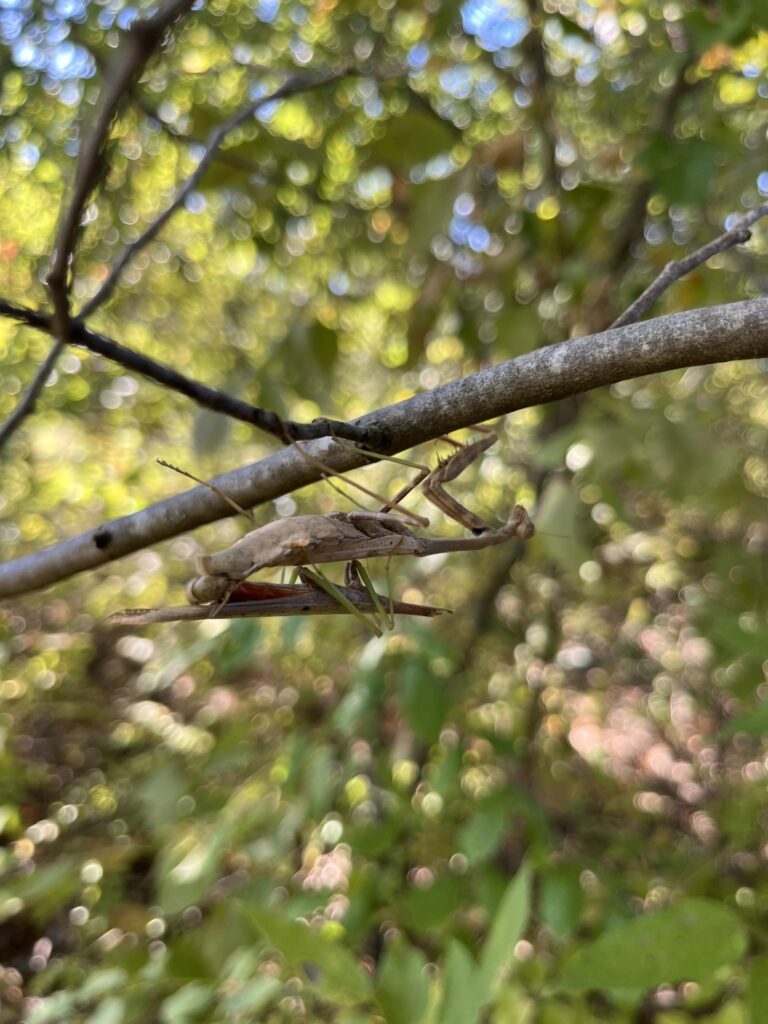Melanie Schuchart, Class of 2014
Praying Mantis, Order Mantodea, get their name from the position they hold their arms which are designed for grasping prey but appear as held in prayer.
The Mantis is a fierce predator using their raptorial arms with barbs to snatch prey and then eat it them alive. They are efficient predators and masters of camouflage. When they molt, they have the ability to change their coloration from various shades of brown to green.
This picture was taken in the Stiff Creek Cemetery during our 4th Saturday work day in New Hope, Texas.
I think it is very appropriate for Halloween and I call it the ride of the headless horseman. Note that the male has been decapitated by the female and this could have occurred during copulation or actually even before.
If we consider our brain a control center, the praying mantis has many control centers called ganglia. It has one for copulation that resides in the abdomen, and thus, even without a head, the body can grab the female and mate for up to 20 hours.

The female will then lay an ootheca with about 150 eggs and die. The babies will be born next spring.
The praying mantis, like bees and wasps, has five eyes. The two large compound eyes and then three others, called ocelli, are used for motion and shadows. The praying mantis is the only insect that can see in 3D or what they call binocular vision, which greatly assists them in catching quick prey like flies and even mosquitoes. Also, the praying mantis is our only insect that can turn its head 180 degrees. While it looks like it can track an object with pupils, they really have psuedopupils which are just how the light reflects in their compound eyes.
Like many animal species, females express sexual dimorphism, with females being larger than males. In addition, the male’s wings extend past the abdomen, while the females do not.
Hope you enjoyed the picture and if you don’t have a costume for Halloween, you can always go as a praying mantis.
This picture was taken on our September work day, our last workday for 2024 is November 2nd. CLICK HERE to check out our chapter’s VHAT Calendar for the 2025 dates. We have a lot of fun removing invasive plants and learning about the world around us.
Additional Articles about Melanie Schuchart

Ride of the Headless Horseman
mconnally2023 September ONLINE Deep Dive with Melanie Schuchart | Butterfly Survival Strategies
mconnallyMichelle Connally, Class of 2018 September 28, 2023 – Thursday, 6:00 PM Join us for…




[…] Check out the story behind this photo by Melanie Schuchart, Class of 2014 – HERE […]